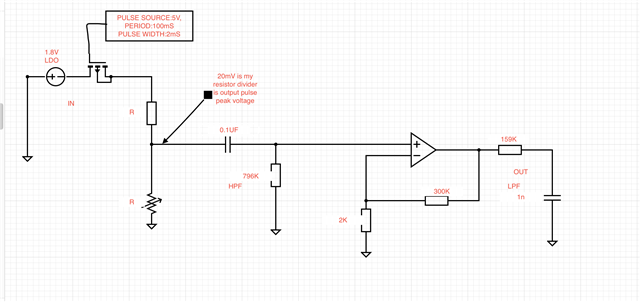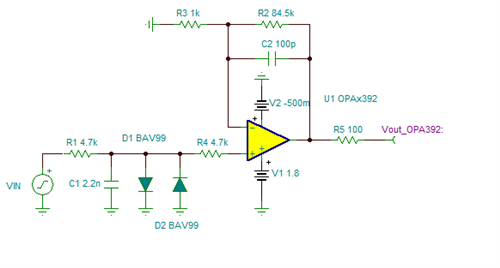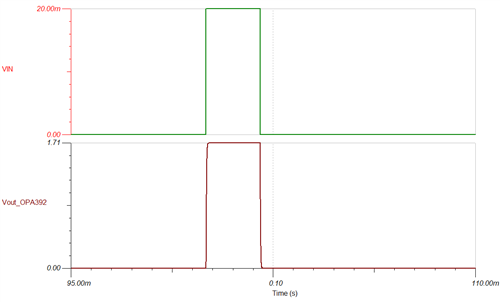Hello all,
Input pulse SPEC:
Pluse width:2ms
Period:100ms
Amplitude :20mV
i am trying to design a non inverting amplifier with filter . My input signal coming with very low voltage and frequency (20mv and 15Hz). And i need to amplify it and make the signal high for indicating it is false case IN DESIGN application (Planning to use Latch).
I designed a op amp(Gain=151 & vcc=1.8V) with BPF(Fl=2hz and Fh=15hz). My fear is that it may amplify the small noise glitch also along with desired signals.pls make comments on it. And welcoming if changes are required.
Any i cause any pulse width detection method to detect my desired pulse and after i will do the amplification. So any method is there to detect the pulse width of 2ms with period of 100ms
Could to pls suggest me best part and circuit example for my design .
Thanks
Vinay






